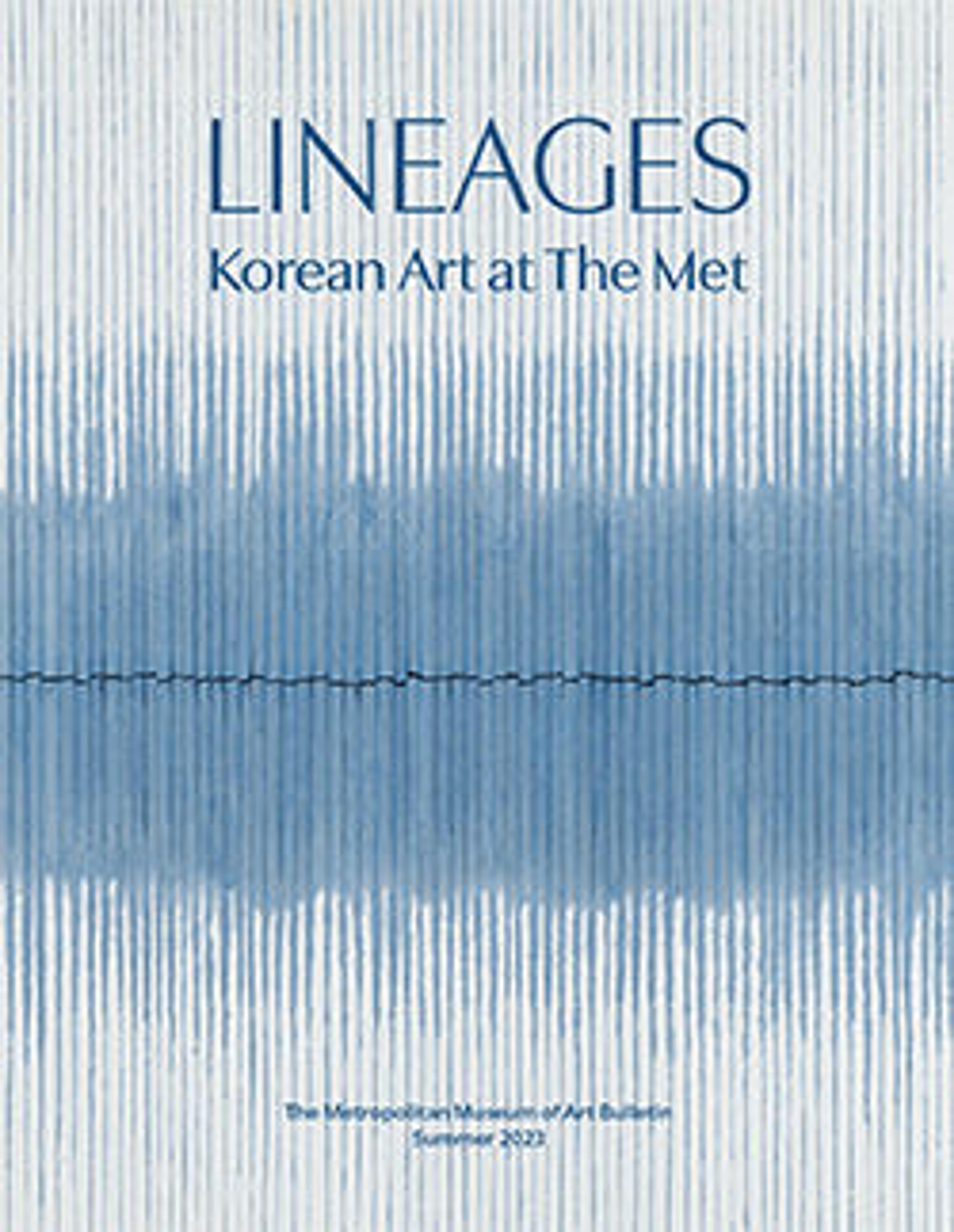Kshitigarbha
A compassionate bodhisattva who rescues sentient beings from descending into hell or purgatory, Kshitigarbha (Korean: Jijang) became enormously popular during the Goryeo period. A key figure in Pure Land Buddhism, Kshitigarbha was often depicted singly and in the guise of a monk—with a shaved head, wearing a monk’s robe, and holding his standard attributes, a staff and a wish-fulfilling jewel (cintamani). This exquisite scroll is a well-preserved example of Goryeo Buddhist painting. Some of its hallmarks are the deity’s graceful facial features and slender fingers, the red and green colors of the robe, and the sumptuously elegant gold decoration.
Very few Korean paintings made prior to the fourteenth century survive. Buddhist paintings of the Goryeo dynasty are renowned for their delicacy and refinement. Most, if not all, were commissioned by members of the royal family and the aristocracy and were painted by monk-painters or professional court painters.
Very few Korean paintings made prior to the fourteenth century survive. Buddhist paintings of the Goryeo dynasty are renowned for their delicacy and refinement. Most, if not all, were commissioned by members of the royal family and the aristocracy and were painted by monk-painters or professional court painters.
Artwork Details
- 지장보살도 고려
- 地藏菩薩圖 高麗
- Title: Kshitigarbha
- Artist: Unidentified artist
- Period: Goryeo dynasty (918–1392)
- Date: first half of the 14th century
- Culture: Korea
- Medium: Hanging scroll; ink, color, and gold on silk
- Dimensions: Image: 33 1/4 × 14 1/2 in. (84.5 × 36.8 cm)
Overall with mounting: 79 × 25 3/8 in. (200.7 × 64.5 cm)
Overall with knobs: 79 × 27 1/4 in. (200.7 × 69.2 cm) - Classification: Paintings
- Credit Line: H. O. Havemeyer Collection, Gift of Horace Havemeyer, 1929
- Object Number: 29.160.32
- Curatorial Department: Asian Art
More Artwork
Research Resources
The Met provides unparalleled resources for research and welcomes an international community of students and scholars. The Met's Open Access API is where creators and researchers can connect to the The Met collection. Open Access data and public domain images are available for unrestricted commercial and noncommercial use without permission or fee.
To request images under copyright and other restrictions, please use this Image Request form.
Feedback
We continue to research and examine historical and cultural context for objects in The Met collection. If you have comments or questions about this object record, please contact us using the form below. The Museum looks forward to receiving your comments.
